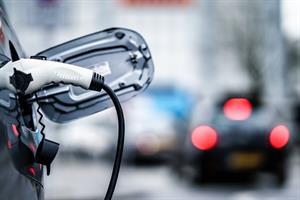According to a study by accountancy firm Ernst & Young Global Limited (EY), China has retained the top position when it comes to progress towards an electric vehicle (EV) future.
 The EY Electric Vehicle Country Readiness Index looks at the preparedness of the top 14 vehicle markets for the arrival of EVs based on supply, demand and regulation. New entrant to the Index, Norway, is a close second to China due to huge uptake in demand and strong regulations. Sweden, Germany and the UK round out the top five respectively.
The EY Electric Vehicle Country Readiness Index looks at the preparedness of the top 14 vehicle markets for the arrival of EVs based on supply, demand and regulation. New entrant to the Index, Norway, is a close second to China due to huge uptake in demand and strong regulations. Sweden, Germany and the UK round out the top five respectively.
Battery manufacturing and supply chain control remains a key driver for China leading the way, as it accounts for 122 out of the 200 lithium giga factories in the world. Backed by soaring consumer demand - 51% of Chinese consumer respondents expect to buy an EV as their next vehicle - and widespread charging infrastructure, China continues to be the largest EV market globally in absolute volume terms. This is despite having an overall electricity supply deficit.
Norway, a new entrant to the Index, has long been a pioneer when it comes to EV adoption. This is due to strong regulation in the form of tax benefits, as well as the introduction of EV lanes and parking spaces, resulting in EVs accounting for more than 70% of all new 2021 car registrations. Sweden’s strong energy ecosystem along with high consumer uptake - more than 40% in 2021, according to EY analysis - and strong manufacturing presence with 41% of all cars produced in Sweden expected to be electric models between 2022-26, means the country remains ahead of Germany and the UK. However, both Germany and the UK have a decidedly strong base of original equipment manufacturers (OEMs) localised battery production and upcoming EV launches deserving of their ‘Leaders’ status credited in the report.
Randy Miller, EY Global Advanced Manufacturing & Mobility Leader said, “Earlier this year, the 2022 EY Mobility Lens Consumer Index indicated for the first time that more than half of all consumers looking to buy a car want an EV. We know now that the demand is there, and now it is up to OEMs and governments to catch up. China, Norway and the other Leaders listed in the Country Readiness Index have demonstrated that a strong mix of regulation to stimulate demand, combined with localised battery production and implementation of a robust infrastructure plan, are critical factors in helping countries successfully transition to EVs.”
Randy continued, “If countries want to reduce their emissions from vehicles and help meet climate targets through a move to EVs, then it is clear that regulation is absolutely key. There are some countries where we’ve seen regulatory action recently, most notably in the US, so it will be interesting to see whether that effects supply and demand going forward. The challenge for every country is the inflexion point at which regulation is no longer needed and EVs are established in the market. Clearly some believe they’re nearly there as they are removing incentives, but others have work to do in order to achieve their EV goals.”
Poor demand for EVs in the US
Despite a robust OEM presence and strong backing from US President Biden’s administration, the US remains at seventh overall – the same position on the Index as last year. However, this is mainly due to poor demand according to the report. Less than 4% of new car registrations in the US are EVs and, as the EY Mobility Consumer Index shows, just 29% of US consumers are looking to buy an EV as their next vehicle, the lowest of all the countries surveyed.